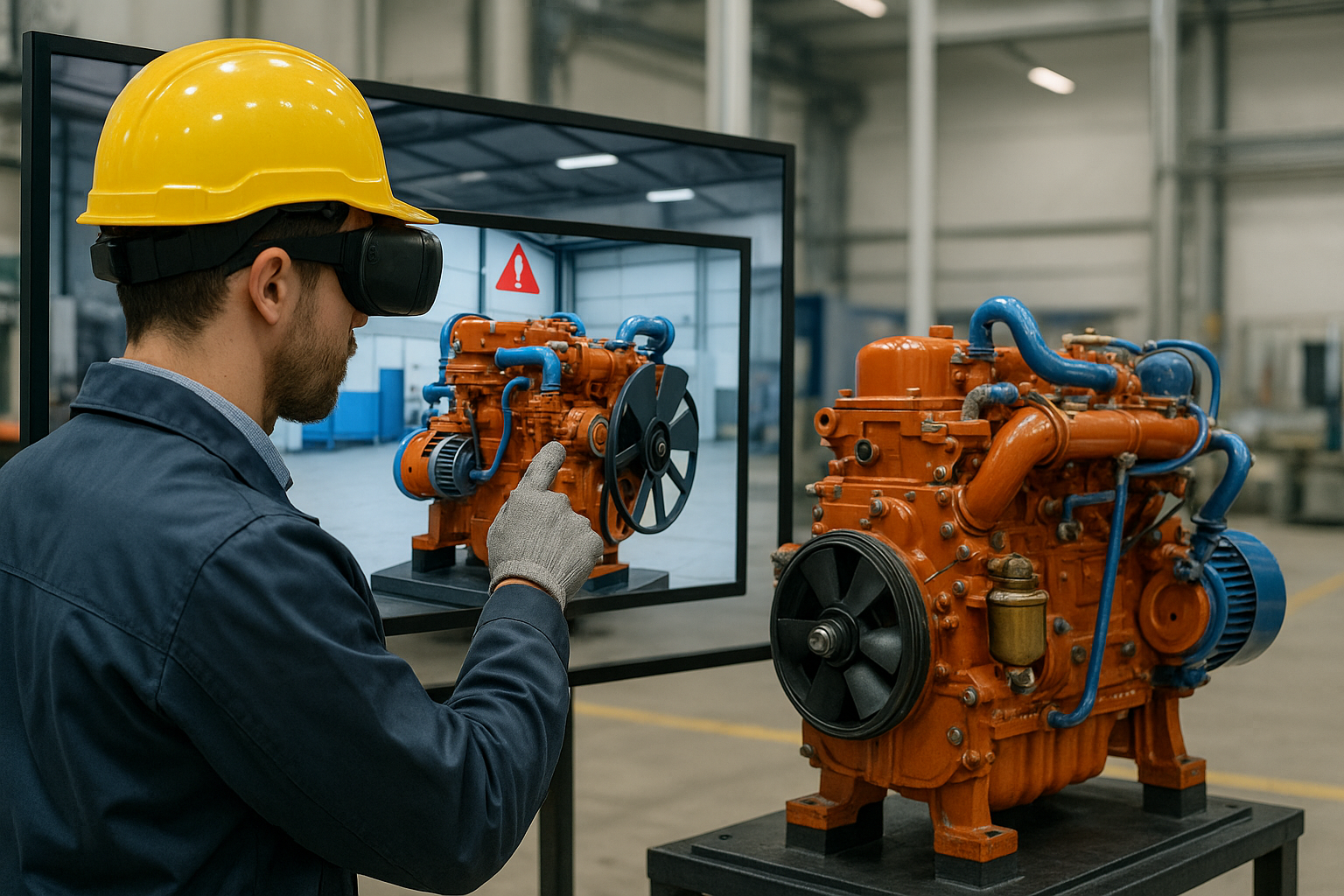Industry 4.0 safety: How VR and IoT-driven digital twins can prevent factory failures
The research integrates virtual training with real-world data monitoring, providing a bridge between theoretical knowledge and hands-on practice. This integration is essential in Industry 4.0 environments where system complexity often outpaces traditional training approaches. By using virtual reality to simulate dangerous or expensive fault scenarios, the model enables technicians to rehearse their responses under controlled conditions, significantly reducing the risks of operational errors.

A new study titled “Virtual Reality and Digital Twins for Catastrophic Failure Prevention in Industry 4.0”, published in the journal Applied Sciences, introduces a novel methodology for integrating real-time digital twins with virtual reality to reduce the risk of catastrophic equipment failures in modern industrial environments.
The research addresses a critical pain point in Industry 4.0: the need for intelligent systems that not only monitor machinery but also predict failures before they occur - all while enabling hands-on training in a safe, immersive setting. At the heart of this framework is a digital twin model of an internal combustion engine, developed in Unity 3D, that interacts with real-world sensor data streamed through an Internet of Things (IoT) platform.
This digital twin mirrors the engine's behavior in real-time and is integrated with a virtual reality interface that allows operators, technicians, and trainees to observe, interact with, and manipulate the engine in simulated conditions. If sensor readings cross predefined thresholds, the system generates alerts, creating a dynamic early warning system. This dual capacity, visual simulation and predictive alerting, establishes a highly versatile, low-risk environment to explore fault scenarios without jeopardizing real equipment or personnel.
What technical innovations power the system?
The proposed system architecture is both modular and scalable, combining physical sensors, data transmission modules, simulation software, and VR headsets to create a real-time interactive training and monitoring platform. Sensors installed on the physical engine collect critical operational data such as temperature, pressure, and rotation speed. This data is transmitted over an IoT infrastructure to a centralized engine that synchronizes the digital twin’s state with the actual equipment.
It leverages Unity 3D as the digital simulation engine. This allows for high-quality, real-time rendering of mechanical systems and their behavior under varying operating conditions. The virtual model can simulate wear, overload, or breakdown in real-time, driven directly by live sensor input.
The researchers designed the system to be cost-effective and easy to implement. The use of commercially available components, off-the-shelf sensors, Unity’s development tools, and accessible VR hardware, makes the methodology suitable for a wide range of industrial environments, including those in developing economies. It is designed to run on standard computers and VR headsets, significantly lowering the entry barrier for companies that cannot afford specialized simulation labs.
The platform also supports interactive fault simulation. Operators can deliberately input failure conditions to observe system behavior, enabling advanced technical training in scenarios that would otherwise be too dangerous or costly to replicate. These simulations can be adjusted dynamically during sessions, allowing for real-time learning interventions and failure response rehearsals.
Notably, the system supports real-time feedback loops. When sensor data triggers an alert in the digital twin, the virtual environment instantly reacts, displaying warning indicators, modifying color-coded system components, or initiating automated emergency protocols. This synchronicity strengthens situational awareness and reinforces predictive maintenance behaviors among technical staff.
What are the implications for Industry 4.0 training and safety?
The research integrates virtual training with real-world data monitoring, providing a bridge between theoretical knowledge and hands-on practice. This integration is essential in Industry 4.0 environments where system complexity often outpaces traditional training approaches. By using virtual reality to simulate dangerous or expensive fault scenarios, the model enables technicians to rehearse their responses under controlled conditions, significantly reducing the risks of operational errors.
In industrial settings with high safety standards, such as energy plants, aerospace facilities, or automotive manufacturing, this approach offers a practical solution to upskill workers without halting operations or exposing them to danger. The real-time feedback system ensures that any anomalies in equipment are immediately visualized, enhancing preventative maintenance and minimizing downtime.
From an educational viewpoint, this system has transformative potential. Engineering students and apprentices can train with lifelike equipment in immersive environments without the need for costly physical prototypes. The digital twin’s responsiveness to real data adds an unparalleled layer of realism to simulations, bridging the gap between classroom learning and field experience.
The low-cost, modular design of the platform also supports democratization of advanced industrial training. Small and medium-sized enterprises (SMEs), which often lack the resources to build dedicated simulation infrastructure, can now deploy high-fidelity virtual training and monitoring systems using widely available hardware and software tools.
Beyond training, the researchers note that their framework contributes to improved predictive maintenance strategies. By constantly analyzing real-time sensor data and correlating it with historical trends through the digital twin, the system can flag early signs of component degradation or system inefficiencies. This proactive approach reduces unplanned downtimes, prevents catastrophic mechanical failures, and extends equipment lifespan.
Moreover, the system’s versatility allows it to scale across industries. Whether applied to manufacturing, logistics, energy, or transportation, any sector that relies on mechanical systems can benefit from integrating digital twins and VR into their safety and training protocols.
- READ MORE ON:
- Digital twins in Industry 4.0
- Virtual reality in industrial training
- Catastrophic failure prevention
- Predictive maintenance with IoT
- How digital twins prevent industrial disasters
- Real-time equipment monitoring using IoT and VR
- Digital twin applications in engineering education
- Industrial IoT systems and digital twins
- FIRST PUBLISHED IN:
- Devdiscourse










